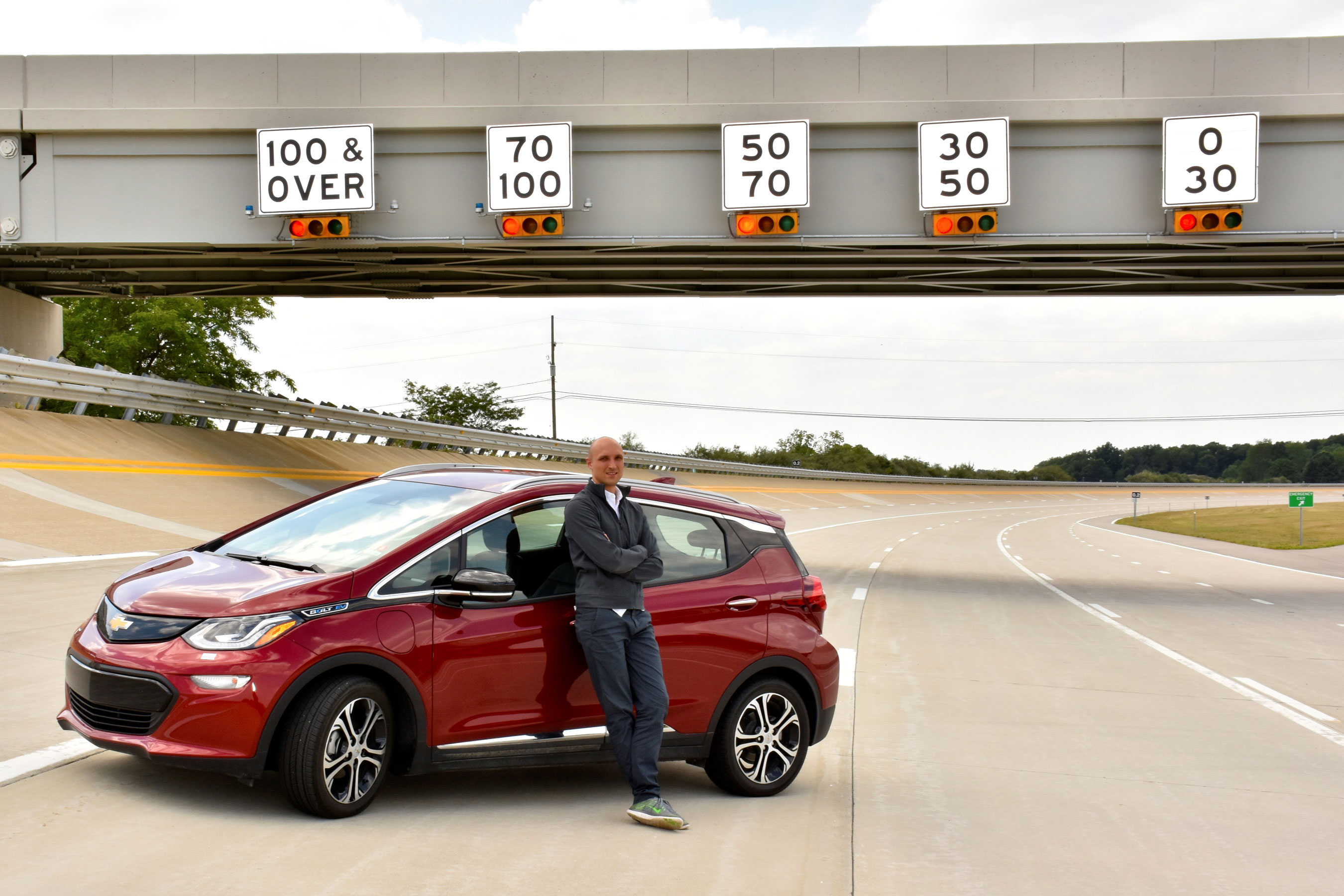
Nate Michaluk, SM ’14, wasn’t a “car guy” growing up, but today he’s helping implement arguably the biggest change in automotive controls since the advent of automatic transmissions in the 1950s.
Michaluk is a controls algorithm engineer for electric propulsion systems at General Motors, where he oversees the one-pedal driving feature on electric cars. The fruits of his labor are available on Chevrolet’s Bolt EV, which allows drivers to slow down and stop by lifting their foot off the accelerator.
“Conventional gas engines provide some braking when you do that, but not enough to stop the vehicle,” explains Michaluk. “In an electric vehicle, decelerating causes the motor to start generating electricity and recharging its battery; that regenerative braking can be used to stop the vehicle without having to switch pedals.” One-pedal electric vehicles (including ones from BMW and Nissan) also have traditional brakes, but most drivers use them only occasionally.
In addition to recapturing energy otherwise wasted, one-pedal driving smooths stops, reduces particulate emissions from brake pads and discs, and cuts maintenance. “And a lot of people find it relaxing,” adds Michaluk, who has logged dozens of hours for testing and evaluation.
Making one-pedal smooth and trustworthy is an engineering challenge. Pedal position, vehicle speed, and other inputs are monitored to determine when and how much regenerative braking should occur, using ultra-high-reliability controls and algorithms.
As a mechanical engineering and nuclear engineering undergrad at Pennsylvania State University, Michaluk helped develop a vehicle with an internal-combustion engine and electric motor. At MIT, he honed his skills further by focusing on controls as he earned a master’s in Course 2. Control technology is essential to hybrid vehicles, which often augment their engine with two electric motors. “It’s quite a juggling act to coordinate three power plants,” Michaluk says.
“The controls class theory and experience have been very transferrable to hybrid transmissions, pedals, and smooth stopping,” he says. “Understand the physics, model the system, and figure out how to get the response.”
Michaluk was a member of MIT’s club volleyball team and still plays. He and his wife, Allie Shoffner, have two dogs and like to hike. On a recent road trip, he enjoyed the experience of hands-free highway driving using Cadillac’s Super Cruise feature, but he adds, “I hope when autonomous vehicles come along, we still have pedals. Driving is fun.”
Keep Reading
Most Popular
Large language models can do jaw-dropping things. But nobody knows exactly why.
And that's a problem. Figuring it out is one of the biggest scientific puzzles of our time and a crucial step towards controlling more powerful future models.
The problem with plug-in hybrids? Their drivers.
Plug-in hybrids are often sold as a transition to EVs, but new data from Europe shows we’re still underestimating the emissions they produce.
How scientists traced a mysterious covid case back to six toilets
When wastewater surveillance turns into a hunt for a single infected individual, the ethics get tricky.
Google DeepMind’s new generative model makes Super Mario–like games from scratch
Genie learns how to control games by watching hours and hours of video. It could help train next-gen robots too.
Stay connected
Get the latest updates from
MIT Technology Review
Discover special offers, top stories, upcoming events, and more.